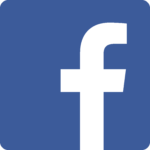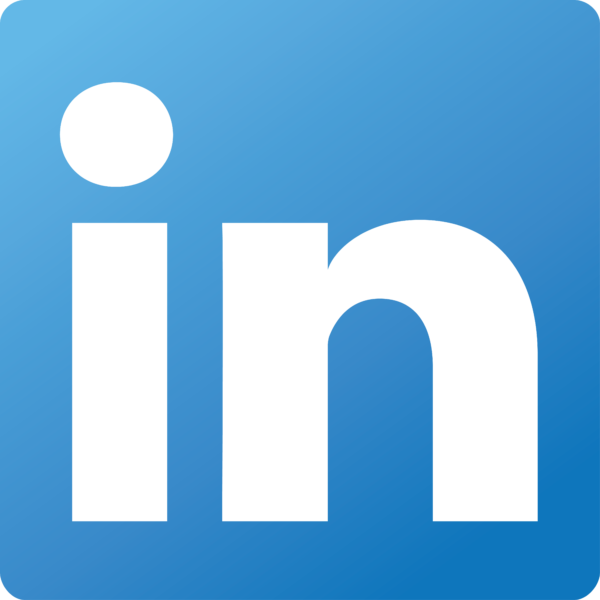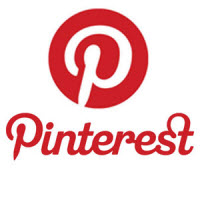There are a lot of social networks out there today, but the “big 4” are definitely the ones you hear about the most.
Below you will find a glossary of Facebook, Twitter, LinkedIn, and Pinterest terms. Hopefully, by the time you’re finished reading it, you will feel comfortable talking the talk and walking the walk on any of the big 4 networks.
Let’s get started:
 Profile – A personal page created for individual use.
Profile – A personal page created for individual use.
Page – This is your business profile or page where customers can find your posts and business information.
Page Like – When a fan likes your page, anything you post or update will show up in their news feed.
Activity Log – A log that shows you all of your scheduled content, as well as past content posted to your page.
Insights – This is your analytics hub. You can find all post and page analytics here.
Reach – The number of people who saw your post. This includes the number of people you reached through organic and paid reach.
Organic Reach – The number of people who saw your post.
Paid Reach – The number of people who saw your post due to an ad you paid for.
Engagement – The number of likes, Facebook Reactions, comments, and shares you receive.
Post Clicks – The number of people who clicked on anything in your post. This could include someone clicking on an image with a “see more” call to action or a URL you included.
Post – A term used for sharing content on your Facebook Page.
Text-Only Posts – A post without an image, video, or link.
Multimedia – A post that includes an image or video.
Link – A post that includes a URL.
Facebook Live – Facebook’s live streaming video feature.
News Feed – Your news feed is the first thing you see when you log in to Facebook. The feed shows new posts from pages and profiles you’ve liked.
Timeline – The stream of updates on your own personal profile or page.
Profile Picture – The image that represents you or your business. This is the smaller photo that shows up alongside all of your posts.
Cover Photo – The 820 x 312-pixel image found at the top of your page or profile.
Like – An engagement function that lets fans give positive feedback on a post.
Comment – This one is self-explanatory!
Share – The share feature lets you share the content you enjoy with personal Facebook friends.
Facebook Reactions – An extension of Facebook’s Like button. There are six reactions: Like, Love, Haha, Wow, Sad, and Angry.
Messenger – A private message.
Tabs – These are found underneath your profile photo and are links to information on your business, location, photos, videos, and third-party apps you have.
Events – Facebook Events can be created by a page or profile, and are used for parties, business events, and planned chats.
Group – This can be public or private, and gives users the chance to come together to talk about a specific subject in one place.
Friends – A friend is someone who received your friend request from your personal profile and accepted it. Once the request is accepted, you will start seeing their updates in your news feed.
Fans – These are the people who liked your business page. A business does not have to take any action for someone to become a fan.
Sponsored Story – This is a message that comes from a friend about them engaging with a page, app, or event that a business, organization, or individual has paid to highlight.
Promoted Post or Boost – You can pay to boost a specific post so that it is shown to more friends or fans.
Display Ad – An ad you create that is shown on the right-hand side of Facebook along with other ads.
Learn more about how to use Facebook for marketing.

Tweet – The content you share with your followers.
Handle – This is your “username” on Twitter that appears with an “@” symbol in front of it.
Hashtags – Although they were originally created and supported by Twitter, hashtags are now utilized on Facebook, Pinterest, Instagram, Vine, Google+, and Tumblr. A hashtag is a group of words or phrases (with no spaces), preceded by a # sign (i.e. #ONECON or #CCPin). It is used to tie various social media posts together and relate them to a topic. Topics are sometimes connected to an event, TV show, sporting event, or any happening or trend etc.
Reply – You can reply directly to a tweet. Only the people following you and the person you’re replying to can see your reply (unless you place a character before the handle at the beginning of the tweet).
Retweet – A way to repost or share someone else’s tweet.
Favorite – This functions just as a Facebook “like” does. You can also use this as a saving tool and go back to your favorites later.
Mention – The act of including someone’s handle in your tweet. That person will then get a notification that they’ve been mentioned.
Direct Message – This is the only way to talk to someone on Twitter privately. You can create these by either starting your tweet with “DM” or going to someone’s profile and using the “message” function.
Feed – This is the first thing you see when you log in to Twitter. New posts from your followers are placed in your feed.
Followers – These are the people who have followed your handle and can see your updates in their feed. You do not have to follow them in order for them to become your follower.
Following – These are the people you follow so you can see their updates in your feed. They do not have to follow you for you to be able to follow them.
Trends – The most commonly used hashtags at that present time are considered trends. They can also be made to pull from a specific location.
Lists – Groupings of your followers that you’ve created and categorized so that you can find them easily.
Connect – A tab where all mentions, replies, retweets, and favorites can be found.
Discover – A tab to search for hashtags, handles, and keywords.
Verified Account – This is used to establish authentic handles of key or public individuals and brands.
Here are 4 tips for how you can maximize your exposure on Twitter.

Update – Status updates and content that you post.
Profile – Similar to a resume, you add information about you and your job history.
Company Page – A place for businesses to include information about their business and create updates about their business and their industry.
Mention – Just like Facebook and Twitter, you can mention others in your LinkedIn updates.
Connection – An indicator that you and a person are connected to each other.
Degrees – This acts like 6 degrees of Kevin Bacon by showing you how you are connected to a person even if it’s through a number of people.
Invitation – Invite someone to join your network and connect with you.
Introduction – A way to introduce yourself to those you are not currently connected to.
Groups – These can be public or private, and can be created by an individual or company. It allows users to come together and talk about a specific subject on one page.
Network – Your connections which also includes the connections of your connections.
Recommendation – A way to recommend a friend/colleague, based on their professional experience, to anyone who views their profile.
Influencers – Key and influential people in your industry that can provide you with great content.
LinkedIn Today – A source for all of your industry news in one place.

Pins – An image uploaded (“pinned”) from any webpage or your own computer to a Pinterest board. All pins link back to their original source, so make sure you choose the right webpage.
Pinner – The person behind the pins.
Repin – The act of sharing someone else’s pin.
“Like” – This functions just as a Facebook “like” or a Twitter “Favorite” does. It tells the pinner you enjoyed what they pinned.
Board – A grouping of pins under a category you’ve created. It allows you to organize your thoughts, images, and websites.
Mention – Just like on Twitter, Facebook, and LinkedIn, you can mention another pinner in a post. They will also get a notification about the pin.
Follow – The act of following other pinners or just a couple of their boards. They do not have to follow you back for you to be able to follow them.
Didn’t think you could look dumb on Pinterest? Here are 25 things to avoid
Want to learn more?
For more help with your social media marketing, sign up to receive our Hints & Tips newsletter. You can also explore other marketing terms and their meanings.
Instagram is the popular app known for the cool pictures you can take with it. But there’s a lot more to Instagram than meets the eye. Once you get past the cool pictures, you’ll see just how influential it can be for your business.
If you take a closer look, you’ll discover that Instagram could be your next great marketing tool.
And with the ever-growing population using this app, it’s something small businesses and nonprofits should explore.
Here are 3 benefits of using Instagram for your small business.
Benefit 1: Personal touch
When I say personal touch, I’m not referring to the color of your office walls or your pretty business cards. What I’m referring to is your personality outside of your business. Like many other small business owners, you may have emptied your savings, took a big risk or gave up an office job to do what you love. But most of your customers don’t know that about you.
Instagram gives you the perfect opportunity to show customers your personal side. By doing this you’ll not only make your business more personable, you’ll leave a lasting impression on current and future customers.
How?
Show your role in the business by giving your customers a behind-the-scenes peek at how you run things. This could be a picture of you in a meeting or a video of you playing a prank on a co-worker. These types of simple pictures and videos can be done in less than five minutes and will add a nice personal touch.
Benefit 2: New demographic
Instagram connects people from all over the world to one another through images. And once you start using it, you automatically open yourself up to a completely new demographic of people. For most small business owners, and of course depending on your target audience, this can only be a good thing.
Over 150 million people use Instagram, with 55 million photos being uploaded every day. Take advantage of this incredibly large, active network of people. Connect with potential prospects!
How?
It’s pretty easy. Simply download the app and start creating your presence on Instagram. Staying open to new connections and being active is the best way to interact with a new demographic.
Benefit 3: Network
It’s easy to get caught up in all those pretty pictures, but like I mentioned before, there is more to Instagram than the photos. Instagram is like any other social network, so use it to its fullest and network!
Social networks were created to help people meet new people and build relationships. Start interacting with a whole new network of interconnected people. In turn, you could gain followers, potential new customers, or new partners.
And it doesn’t end there. Instagram is connected to Facebook and Twitter. This makes it easy to connect all of your networks and use them interchangeably without too much stress.
How?
Like, comment, and follow others and you will begin to see your follower numbers rise. Once you connect Instagram with Facebook and Twitter, you can add to the friends and followers you already have. And remember, like any other social network, you have to stay active to continue to build your presence and maintain what you’ve already established.
So taking cool pics and videos can do all of the things above?
They do say a picture is worth a thousand words, right? Pictures tell stories and if used properly, can drive engagement. Instagram can be a powerful channel that allows you to show customers the personal side of your business, connect with new prospects, and network to create meaningful relationships. Pinterest is another great social media network that drives engagement through images.
Want to learn more?
For more help with your social media marketing, sign up to receive our Hints & Tips newsletter.
If you’re only using Twitter to promote your own content, you’re really missing out.
While it’s certainly good for that, it’s also a valuable discovery tool as well.
There are more than 500 million tweets sent on Twitter every single day. That’s a ton of information!
Luckily, Twitter makes it easy to navigate that information and find the stuff that’s actually relevant to you with Twitter search.
Here are 5 unexpected benefits of using Twitter search.
1. Find out what people are saying about you
A lot of Twitter users won’t take the time to track down your Twitter handle every time they’re talking about you or your business. This is especially true if someone is voicing a complaint or asking other Twitter users about your products or services. (Ex: @RyanPinkham: I’m looking for a good place to bring my dog during the day. I heard Paws at Play was good. Has anyone used them?)
To find out what people are saying about you, search for your name or your business name and any tweet containing those words will appear in your search stream. This will help you stay on top of those relevant conversations and ensure you never miss an opportunity to WOW! your customers or address a potential complaint.
2. Stay in touch with your community
One of my favorite hashtags to follow on Twitter is #GloucesterMA. It is the unofficial hashtag of my hometown, and is full of updates about local events and other happenings throughout the community.
For me, it’s the perfect way to stay up to date with everything that’s going on. For the businesses and organizations that participate in and follow this discussion, it’s the perfect resource for staying tuned in to everything happening in our corner of the world.
Try searching for a hashtag or term related to your local community. If you find one that’s actively being used, save it. If you don’t, try starting the conversation by using it when connecting with other local Twitter users.
3. Be on top of hot topics
Even if the majority of work you’re involved in happens on a local level, there are topics outside of your community that you’ll need to be aware of.
Maybe there’s a state or federal policy change that could directly impact members of your industry. Or maybe there are new trends in your field of work that you need to be on top of.
By saving a search related to a particular topic you are interested in, you will have instant access to the most up-to-date discussions that are already taking place. [Tweet this tip!]
4. Discover content inspiration
Coming up with great content is one of the biggest killers of small business marketing success.
That’s why it’s so important to always be on the lookout for new sources of content inspiration.
Twitter search offers an easy way to find content that’s relevant to your business from “content leaders” in your industry. Simply pick a topic or hashtag to follow, and you’ll have a stream of relevant content ideas all in one place.
5. Be smarter, better, more informed…
No matter what line of work you’re in, it’s important to always be looking for new opportunities to grow and make improvements.
If you’re reading this post, than there’s a good chance you’re interested in learning something new about Twitter or social media marketing.
But maybe marketing isn’t your biggest concern. Maybe you’re more interested in learning about time management or how to find the right employees. Maybe you want to run a better event or get more from your partnership agreements.
Whatever topic is on the top of your to-do list, Twitter search can help expose you to a number of valuable resources that can improve your results.
Expect the unexpected
When you start to think differently about how you approach sites like Twitter, Facebook, Pinterest, or LinkedIn — you’ll discover unexpected benefits you never knew existed.
For Twitter, that could mean finding a valuable new source of information that helps you run your business and improve your marketing results. New opportunities exist on other networks as well.
Want to learn more?
Stay on top of the all the latest social media and email marketing trends! Sign up for our Hints & Tips newsletter to get our best blog posts delivered to your inbox twice each month.
